I wrote this article in Japanese and translated it into English using ChatGPT. I also used ChatGPT to create the English article title. I did my best to correct any translation mistakes, but please let me know if you find any errors. By the way, I did not use ChatGPT when writing the Japanese article. The entire article was written from scratch by me, Saikawa Goto.
Introduction
Movies and books covered in this article

Three takeaways from this article
- Joao Magueijo’s “VSL theory” goes directly against Einstein’s “special theory of relativity.”
- The “Big Bang theory” had difficult problems to solve, such as the “horizon problem” and the “flatness problem,” which were resolved by “cosmic inflation.”
- However, since there is still no evidence that “cosmic inflation” is correct, the author thought about alternative hypotheses and arrived at the “VSL theory.”
Self-introduction article


Published Kindle books(Free on Kindle Unlimited)
“The genius Einstein: An easy-to-understand book about interesting science advances that is not too simple based on his life and discoveries: Theory of Relativity, Cosmology and Quantum Theory”
“Why is “lack of imagination” called “communication skills”?: Japanese-specific”negative” communication”
The quotes in the article were translated using ChatGPT from Japanese books, and are not direct quotes from the foreign language original books, even if they exist.
I Thought “Faster Than the Speed of Light” was a Fallacious Book, but it Turned Out to be an Intriguing Content that Reasonably Opposes the Einstein Theory

The author of this book is a physicist of Portuguese origin who was serving as a professor at a university in the UK at the time of writing.

The hypothesis he advocates in this book is called the “varying speed of light theory.” The Japanese translation of this book was published in 2003, nearly 20 years ago. I don’t know how “VSL theory” is being treated in the scientific world today, but a quick search on the internet shows that it is in a state of “neither acknowledged nor denied,” which is a typical state for a scientific theory. If evidence supporting the “VSL theory” is discovered in the future, there is a possibility that it could quickly become the mainstream of cosmology.

Later I will explain in detail, but anyone with even a little knowledge of science should feel some skepticism from the title “Faster Than the Speed of Light” and the name of the theory “varying speed of light theory”. I also doubted if this book was “a fallacious book” when I first learned of its existence. However, after reading it, I understood that it was a very interesting and well-written book. Of course, it does not change the fact that the author makes “unconventional claims that challenge scientific conventions”, but it can be said with certainty that he is at least a “legitimate researcher”.
Why do “Faster Than the Speed of Light” and “Varying Speed of Light Theory” Seem Suspicious?
For a long time, books claiming “Einstein was actually wrong!” and similar things have been published. This is not limited to Einstein, as people in the realm of the occult often pull out famous people to assert their own beliefs, claiming that “existing knowledge is incorrect” in order to attract attention. And at first, I thought that the book “Faster Than the Speed of Light” is also such a “fallacious book”.

However, why did they feel that way? I think people who are not very familiar with science would not understand. For that explanation, let’s start with the story of “special theory of relativity” that Einstein created. Of course, if you say “I already know that,” you can skip it.
Einstein created two completely different theories called “special theory of relativity” and “general theory of relativity”, which shocked the scientific world. Although they are generally referred to as “theory of relativity” without distinction, the one relevant to this book is the “special theory of relativity” announced by Einstein in 1905, which is called the “miracle year”. Interestingly, Einstein was a patent office employee in 1905 and made his debut as a scientist with five scientific papers, each of which was “a shock that would change the world.”
Now, in the world of physics, the “special theory of relativity” is said to be “nothing is more correct than Special relativity,” and its correctness is highly trusted. The author also writes so in his book. And the “VSL theory” proposed by the author is precisely a “hypothesis that denies the special theory of relativity.” Just this alone should help you understand how much of an unorthodox claim it is.
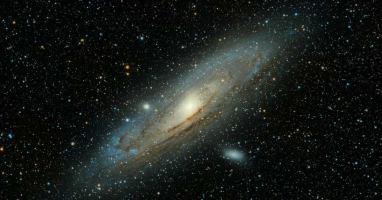
The “special theory of relativity” is a theory derived from a very simple premise. That premise is that “the speed of light is constant under any circumstances.” This is called the “principle of constancy of light velocity.” Einstein came up with this remarkably unconventional yet accurate idea that accurately depicts reality.
Let me explain just how unusual Einstein’s “principle of constancy of light velocity” is. First, let’s consider a mundane example. Suppose there are two cars, A and B, that are driving parallel to each other on a straight road at a speed of 100 km/h. If a person on the side of the road measures the speed of these cars, they would both be going “100 km/h,” of course. But if you observe car B from car A, car B should appear to be standing still, or in other words, going “0 km/h.”

In this way, “speed” is a common-sense idea in our everyday world that varies depending on “how it is measured.”

However, Einstein argued that “light is different.” The speed of light always remains constant no matter how it is measured. For example, let’s say we have the same situation as before, but this time, cars A and B are running alongside each other at the speed of light. In this situation, if you were in car A looking at car B, it would appear to be moving at the speed of “light speed (300,000 km/s)” instead of “0 km/h.”
This may seem absurd, but in modern physics, Einstein’s claim is considered true: the speed of light is constant under all circumstances. This means that there can be no such thing as “faster than the speed of light.” While Einstein’s theory may seem crazy, it has been accepted as correct after many years of scrutiny. That’s why Joao Magueijo’s challenge to Einstein is so remarkable.
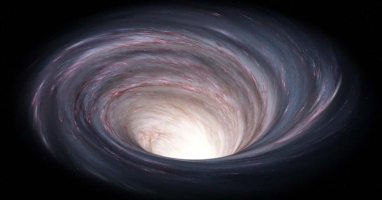
The translator of this book, Aoki Kaoru, wrote in the afterword that she felt it was “a fallacious book” when asked to translate it. Well, anyone with even a little knowledge of science would feel the same way. On the other hand, the reason I decided to read this book is because it was translated by Aoki Kaoru, and I have read many science books translated by her in the past. To see her name so frequently in science book translations means she must be a very reliable translator. In fact, every “Aoki Kaoru translated” science book I’ve read so far has been excellent. That’s why I became interested in reading this book, even though it might seem like a fallacious book.
And as expected, this book is a really interesting work.

Explanation of “Cosmic Inflation” to Supplement the “Big Bang Theory”
In this book, the explanation of the “VSL theory” does not start abruptly. As a general science book, the background is first explained, which is why a theory that challenges Einstein head-on is needed. The most important part of this is “cosmic inflation.” This is an idea that expands on the “Big Bang theory” that explains the beginning of the universe. And the “VSL theory” is created to complement the parts that cannot be explained by “cosmic inflation.”
(●●●●KANRENKIJI)A Universe from Nothing
So, let’s explain why “Big Bang Theory” needs “cosmic inflation”.
The story that “the universe began with the Big Bang” is known even to those who are not familiar with science. It is a concept that a big explosion occurred and the universe was born, although it is an inaccurate expression. However, the original “Big Bang theory” had two serious flaws, the “horizon problem” and the “flatness problem.”

The “horizon problem” is a problem that arises from the question, “Why is the universe so homogeneous?”
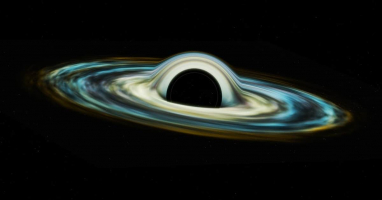
In space, there is something called “cosmic microwave background.” This is also known as the “remnant of the Big Bang” and can be understood as a type of “radio waves that can only be emitted to ‘the universe in the state immediately after the Big Bang'”. The discovery of this cosmic microwave background proved the correctness of the Big Bang theory, but at the same time, it revealed a flaw in the theory.
The “cosmic microwave background” shows almost the same value in any part of the universe. But that is very strange. This is because the universe should have expanded rapidly right after its birth.
To get an idea of this, let’s think about something like this: let’s say you draw two points, A and B, on a balloon before you inflate it. Try to make the points as close as possible to each other. When you inflate the balloon, you’ll be able to imagine that the distance between points A and B expands rapidly compared to before. Roughly speaking, the phenomenon of the Big Bang can also be understood as an expansion like a balloon, although the expansion speed is much faster than that of a balloon.
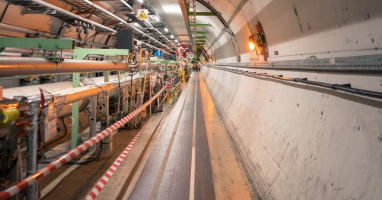
When we consider a scenario similar to the balloon, if we set two points, A and B, in the space just after the Big Bang, the distance would expand enormously due to the expansion. However, the values of the cosmic microwave background are almost the same everywhere. Since space expanded rapidly and moved away in an instant, it would actually be more natural if the value of “cosmic microwave background” was different in each place, but why does “cosmic microwave background” show the same value to such an extent? This is called the “horizon problem.”
As for the “flatness problem,” imagine a tug-of-war. If there is a difference in strength between the two sides pulling, the rope will be easily pulled to one side, but if the forces are evenly balanced, the rope will hardly move.

The same kind of thinking can be applied to the universe. There are forces in the universe that try to expand space and forces that try to shrink it, and the ratio of these forces is called “Ω (omega)”. The closer Ω is to 1, the more the two forces balance each other out, and the universe maintains a “stable state where it doesn’t expand or shrink too much.” This stable state is called a “flat universe.”
Ω is a measurable number, and according to current observations, Ω is almost close to 1. That means the universe we live in is a “flat universe.”
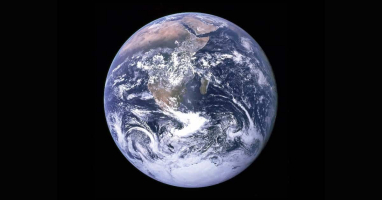
However, this fact is very mysterious. The reason is that theoretically, the “possibility of Ω becoming infinitely close to 1 ” is very low. For example, it is known that if Ω was slightly larger than 1 immediately after the Big Bang, it known to be that the universe shrinks so much that it ends up in the Big Crunch (the opposite of the Big Bang). On the other hand, if Ω was slightly smaller than 1, the universe would have expanded at an incredible speed, leaving no time for stars and galaxies to form.

In other words, for the “flat universe” we live in to be realized, Ω immediately after the Big Bang had to be close to 1 with an incredible degree of accuracy. To be more specific, Ω immediately after the Big Bang had to be between “0.999999999999999” and “1.000000000000001”. This may seem quite miraculous.
In the original Big Bang theory, there were no constraints on the value of Ω immediately after the Big Bang, so it cannot be explained why it started from a state where “Ω was close to 1 with an incredible degree of accuracy.” This is the “flatness problem.”

And so, “cosmic inflation” was born to correct such “defects.” This article does not touch upon how “cosmic inflation” solves the “horizon problem” and “flatness problem,” but it successfully fills the fatal flaws of the “Big Bang Theory.”
However, evidence supporting “cosmic inflation” has not been discovered to this day. Certainly, “cosmic inflation” is an almost unique hypothesis that solves the “horizon problem” and “flatness problem.” However, it has not been verified by observation or experiment, and there are also points that are not fully explained even by “cosmic inflation.” The author of this book even writes things like “many scientists think that ‘cosmic inflation is incomplete.'” We reluctantly accept it now because there is no other explanation, but there is still no confirmation that what “cosmic inflation” suggests actually happened.

As an Alternative to “Cosmic Inflation,” the “VSL Theory” was Born
By this point, it should be clear why the author came up with the “VSL theory.” That is, if “cosmic inflation” is not recognized as correct, there is still room to consider other hypotheses. And when he was looking for such a theory, he suddenly thought, “If light had traveled faster in the universe just after the Big Bang, could we not solve both the ‘horizon problem’ and the ‘flatness problem’?”

From that idea, there were quite a few twists and turns leading up to the actual construction of the “VSL theory,” but fortunately, this idea worked out. Currently, it is known that the speed of light is “about 300,000 km/s,” but if you consider that light was traveling faster in the universe just after the Big Bang, both the “horizon problem” and the “flatness problem” can be solved. And that’s not all. The “VSL theory” he created seemed to solve other difficult problems in cosmology as well. This can be said to be very promising. It’s better to solve multiple problems with one hypothesis than to need multiple hypotheses to solve them.

However, the biggest problem is that it “ignores Einstein’s principle of the constancy of the speed of light.” This problem goes beyond just ignoring the special theory of relativity. This is because Einstein’s “principle of the constancy of the speed of light” is also relevant to fields outside of cosmology. In every aspect of science, the idea that “the speed of light is constant” is used as a matter of course.

For example, the author realized that accepting the theory that “the speed of light varies” would violate the “law of conservation of energy.” In science, the “law of conservation of energy” is just as important as the “principle of the constancy of the speed of light.” Simply incorporating the idea that “the speed of light is not constant” would have an impact on every area of physics. Though, it seems that the “flatness problem” is solved by “breaking the ‘law of conservation of energy'”. Scientific theory is an interesting thing, after all.

For science, “speed of light” may be like “pi” in math. Just as pi (π) is a very mysterious entity that also appears in areas unrelated to “pi,” it seems that the assertion that “the speed of light varies” is similar to thinking that “pi varies.”
The “VSL theory” claims to provide solutions to several other problems that cannot be explained by “cosmic inflation,” and in that sense, the hypothesis may surpass “cosmic inflation.” However, such a “VSL theory” is based on the taboo for scientists, namely the negation of the “invariance of the the speed of light” principle. Even if it were correct, I think it would be difficult for scientists to accept.

An astronomer said on the cover of this book,
If this theory is proven, it will be the most important discovery of the past 100 years.
Joao Magueijo, who dared to question the fundamental rules of physics, created the “VSL theory,” which could become a major discovery in the history of science.
I look forward to seeing what conclusions scientists will draw.

Conclusion
This book is a science for the general public book that explains science in detail, but some of the passages are like essays by the author. Many of them are about the “strange national character of England” that the author, who conducts research in England, feels. In the process of research, various obstacles are encountered, and the “national character of the British” is involved to some extent, and the author humorously tells various interesting episodes he experienced. I felt that this work is also an opportunity to glimpse into the world of “the daily life of a researcher”, which is not usually available.

Published Kindle books(Free on Kindle Unlimited)
“The genius Einstein: An easy-to-understand book about interesting science advances that is not too simple based on his life and discoveries: Theory of Relativity, Cosmology and Quantum Theory”
“Why is “lack of imagination” called “communication skills”?: Japanese-specific”negative” communication”







コメント